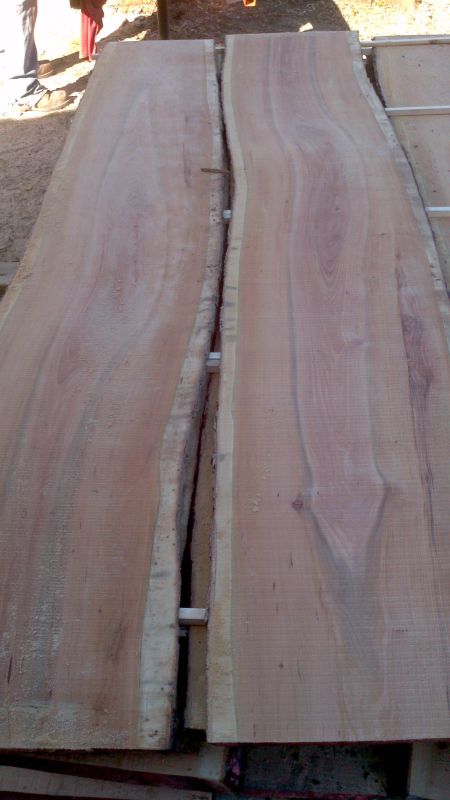Salvaging Downed Timber
The sooner you saw, the better, but some trees can still yield valuable wood after years on the ground. March 26, 2013
Question
I have several tree down on my land in southeast KY, some of which I think could make nice lumber. I know of a 20" cherry and several 25-35" red oaks. Most of these trees have been down for over a year, maybe longer than two. I want to load them up and have someone local saw them for me. I'll be building a house in a few years and thought I could eventually have some of this milled into flooring, cabinets, furniture, etc. I'm hoping some of this will have a curly/tiger pattern in it. As long as the end looks good where I saw the log to length, I would assume itís fine. None of this wood seems rotted but what are the chances itís not good? What would be wrong with it that would keep it from making beautiful furniture?
Forum Responses
(Sawing and Drying Forum)
From contributor T:
"What would be wrong with it that would keep it from making beautiful furniture?" If you wait longer to have it sawed (if it's been on the ground) it'll pickup bugs and termites, but kiln drying can kill those. The cherry heart will hold up good, the oak probably needs cutting soon.
From contributor M:
I second that. Saw them up as soon as possible, sticker and air-dry it properly, and start to line up a dry kiln before the bugs, especially PPB, and/or fungus ruin it. Sapwood may be already compromised, but the heartwood probably fine. Fair amount of work by the time itís part of your house, but a lot of satisfaction. Plus, I just hate to see wood of that quality go to waste.
From the original questioner:
I'm glad to hear that the wood should be ok, as long as I move it soon. What would be the best way to have the logs sawn? I'm looking for the best figure and it will be stored for quite a while before re-sawing. I hear of a lot of people cutting nice trees into thick flat sawn flitches. Is this a good idea or not?
From contributor E:
I personally like cherry flatsawn, but prefer oak quartersawn. Get it sawn, stickered, and under a roof as soon as you can. The oak will make great flooring, trim, and etc. The cherry, especially if you use only the heartwood, would make beautiful kitchen cabinets, etc. Cut logs about one foot longer than you want to allow for checking on ends when you go to use it. If sawn and kiln dried immediately, this is not as important.
From contributor Q:
I have milled logs that were down for years and the wood is solid and clear. I notice the difference is in the way it's down. If it's on the ground it deteriorates rather quickly (except white oak), but if suspended several feet off the ground by the branches it takes a lot longer to decompose.
From contributor J:
We just sawed up some butternut and cherry logs pulled out from our woods that had been down for a number of years. The butternut logs had about an inch of moss on them, but only the outer inch or so was decayed. The cherry hadn't been down as long, maybe three years or so, but here's a picture of what came from that log. After these cuts, I got even nicer slabs further into the log - 24" wide, 2 1/2" thick, bookmatched slabs that look like dark red flames running the length of the slabs.

Click here for higher quality, full size image
From the original questioner:
I loaded up some 20" Cherry loaded a few days ago. There's a 10', 12' and a 10' with a big crotch. It was my first time parbuckling, but it went well. I'll take it to the mill later in the week.
